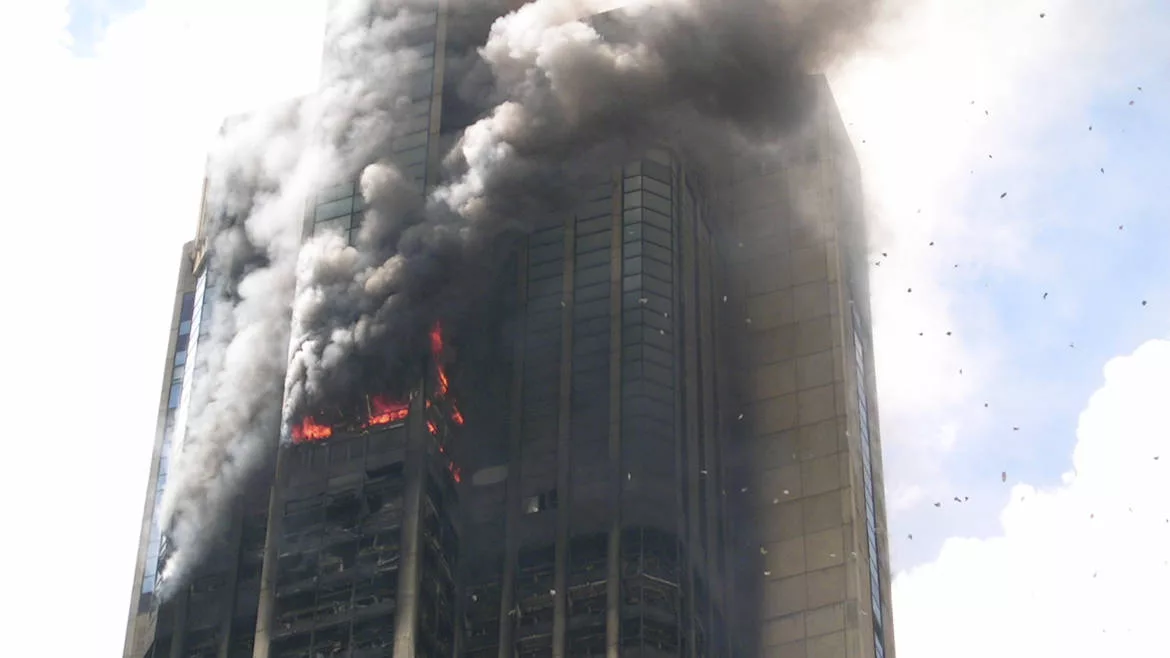Understanding Intumescent Paint Standards

emarys, iStock / Getty Images Plus, via Getty Images
If you want your structure to have the best fire resistance possible, you’ll want to give intumescent paints serious consideration. Intumescent paints are easy to apply, nice to look at, and can stop a fire in its tracks. Let’s talk about how intumescent paint works and some of the industry ratings you’ll need to know if you’re thinking of using intumescent paints on your structure.
What is intumescent paint?
Intumescent paint is a passive fire protection system. While intumescent paint may appear to be a regular paint, it’s not— it’s actually a complex of chemicals held inert in a binder.
When exposed to the heat of a fire, that binder melts, and the chemicals quickly begin to react. What was previously a thin coating of paint is rapidly transformed into a thick, flame-resistant foam, often up to 25-50 thicker than it previously was.
As that foam is further exposed to fire, it hardens into a highly insulative char, which offers excellent heat protection to the material it’s been applied to. This char can prevent structural steel from warping or buckling, even after long exposure to high temperature fire.
Intumescent paint has quickly become the industry standard because it’s so easy to apply, and aesthetically pleasing. But you can’t just slap on a coat and call it a day; when it comes to fire-retardant paint, you have to meet a strict set of standards.
The Four Main Fire Resistance Standards for Intumescent Paint
ASTM, UL, and NFPA standards are different ways of denoting the quality and fire resistance of certain materials. Each standard is set by a different organization, but all of them are considered reliable. The ASTM is the American Society for Testing and Materials; they set industrial safety standards that are accepted in over 140 countries. UL standards are set by UL Solutions, Inc., an international safety science company; the UL safety certification is very well-respected in the fire safety space. Lastly, the National Fire Protection Association, a global nonprofit devoted to fire and electrical safety since 1896, sets the prestigious NFPA safety standards.
Some of the most important fire ratings you’ll want to look at when you’re considering intumescent fireproofing are ASTM E84, ASTM E119, UL 263, and UL 1709.
- ASTM E84 describes flame-spread classification. This rating tells you how fast fire will burn through a building material (i.e. the flame spread index), and the amount of smoke it will produce (i.e. the smoke development index). Materials get a Class A, B, C, or D rating based on test performance. Thanks to their very high fire resistance, intumescent paints generally test into the highest rating, Class A, which is the highest ranking. You should consider the ASTM E84 classification of the intumescent paint you’re considering purchasing before buying.
- ASTM E119 describes how long a structure can endure fire before it loses structural integrity and collapses. To become one-hour fire-rated, an intumescent paint must withstand fire for one hour before the flame penetrates the other side of the substrate. Most building codes will require a one-hour or two-hour fire rating to be compliant with the International Building Code (IBC), but this will also depend on the type of material in question.
- UL 263 measures fire protection for structural steel — it’s similar to ASTM E119, except it only looks at the fire endurance of structural steel. It is the default standard in North America for evaluating fire protection of structural steel.
- UL 1709 measures a material’s performance in a “rapid-temperature-rise fire” — one that reaches 2000F within the first five minutes of fire exposure. This standard typically applies to critical equipment in the petrochemical industry.
Why Are These Standards Important?
There are two main reasons that compliance with these standards is important. One is that giving a structure adequate fire resistance allows occupants enough time to safely escape in the event of a fire. The other is that adequate fire resistance allows emergency personnel to safely operate in or around the structure during a fire.
These standards aren’t just arbitrary requirements — failing to take them into consideration could potentially endanger lives. Once you’ve settled on intumescent paint as your fire resistance coating of choice, it’s best to consult with a coatings professional to make sure you’re in compliance with all the required standards!
Looking for a reprint of this article?
From high-res PDFs to custom plaques, order your copy today!




